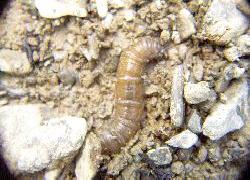

Nonetheless these species have the distinctive habitus of the family and a familiarity with the European or even the UK fauna will allow most species of the family to be recognized.Īdults are small, between 1-9mm long, elongate, flattened and often parallel-sided beetles, generally well-sclerotized and dark coloured or drab although in a few e.g. some Oriental Macronychini have 8-segmented antennae with the terminal segment large and oval, forming a distinct club, and the dorsal surface of the head is covered with hydrophobe hairs, extending the ventral plastron. The following general description will suffice for much of the family but some exotic forms are atypical e.g. An example of the tropical diversity of the tribe is provided by the genus Austrolimnius Carter & Zech, 1929 which includes more than 100 species distributed in the Australasian and Neotropical regions, conversely Lamalelmis Spangler, 1981 includes only 2 Neotropical species while the monotypic Aesobia Jách, 1982 occurs in Sri Lanka and Anommatelmis botosaneanui Spangler, 1981, also the only member of the genus, occurs in Haiti. The higher-order classification of the Elminae has yet to be worked out but the 3 tribes mentioned are generallyĪccepted and the Elmini is usually further divided into 2 subtribes, Elmina Curtis, 1830 and Stenelmina Mulsant & Rey, 1872, both of which are represented in the UK fauna. Elmini Curtis, 1830 includes the majority of the species in about 100 genera, it is cosmopolitan in distribution and generally comprises the greater part of temperate faunas but even so diversity falls drastically with increasing latitude the majority of the European fauna belongs to this tribe including all but one of the UK species, and more than 90% of the North American fauna are included compared with the 100 or so American species only 33 occur in Canada. the Philippines and other Old World islands, extending south to Sumatra, the tribe has not been recorded from Australia or the African region. Despite being extensively distributed in e.g. Macronychini Gistel, 1848 includes 22 genera and is mostly Old World tropical and subtropical in distribution they are absent from South America and only 3 species of 2 genera occur in the Nearctic region the tribe includes genera endemic to Japan and Malaysia as well as many more generally distributed through the eastern Palaearctic and southeast Asia. variegata (Germar, 1824) occurs in North America. Ancyronychini Ganglbauer, 1904 includes the single genus Acyronyx Erichson, 1847 with about 35 species, mostly from the eastern Palaearctic and southeast Asian regions it is absent from Australia and only a single species, A. Elminae Curtis, 1830 includes more than 120 genera in 3 tribes and is cosmopolitan.

The wider Palaearctic fauna includes only 6 species.


3 species of 2 genera are Nearctic while only a single species, Potamophilus acuminatus (Fabricius, 1792) occurs in Europe but does not extend to the UK. Africa, southeast Asia or Australia and temperate faunas tend to be very poor e.g. Larainae Boving & Craighead, 1930 is the smaller subfamily with 27 described genera it is present in tropical areas worldwide and the greatest diversity is in the Neotropical and Afrotropical regions, the genera tend to be of restricted distribution with many endemic to various regions e.g. more than 250 species of about 40 genera occur in the Neotropical region and the Australian fauna includes more than 100 species while 100 species of 26 genera are Nearctic the European fauna includes about 45 species of which 25 occur in central Europe and 12 species of 7 genera extend to the UK. This is a cosmopolitan family of about 1500 species, although the group has never been popular and many more remain to be named worldwide, of 150 genera and 2 subfamilies, which is most diverse in warmer regions e.g.


 0 kommentar(er)
0 kommentar(er)
